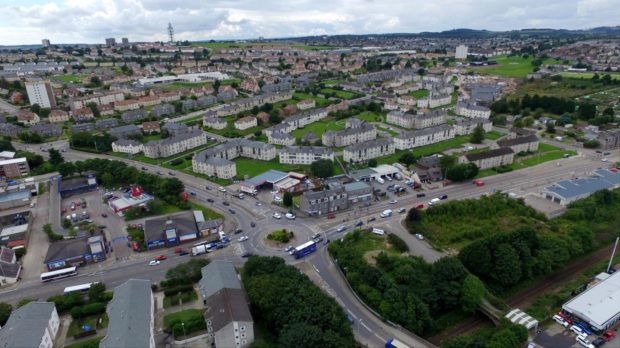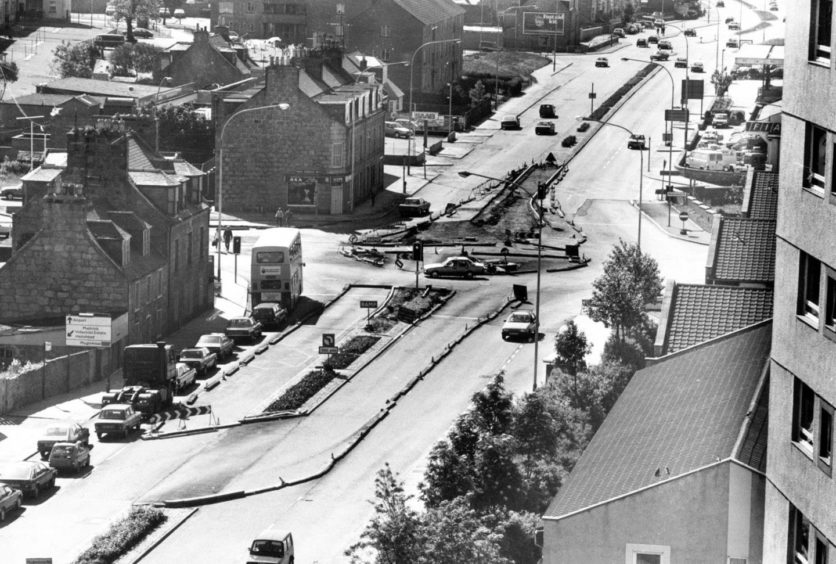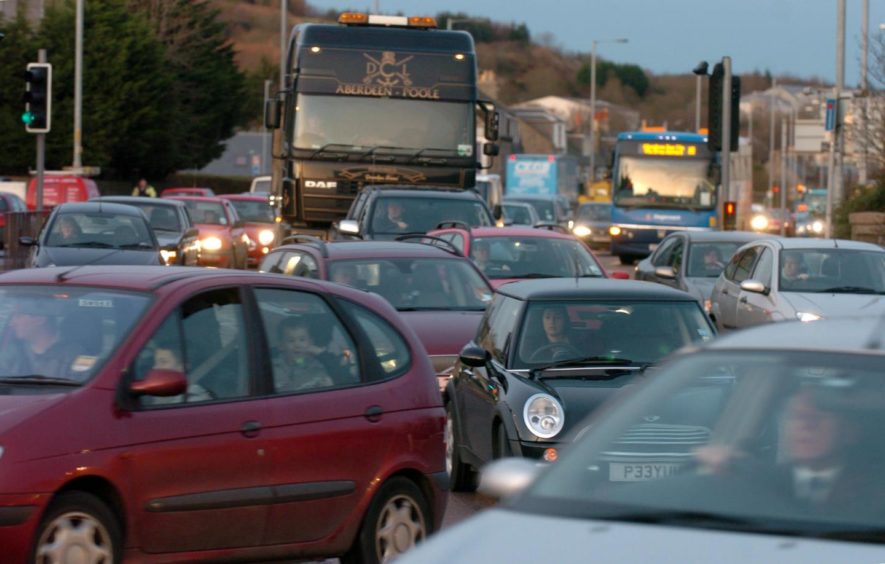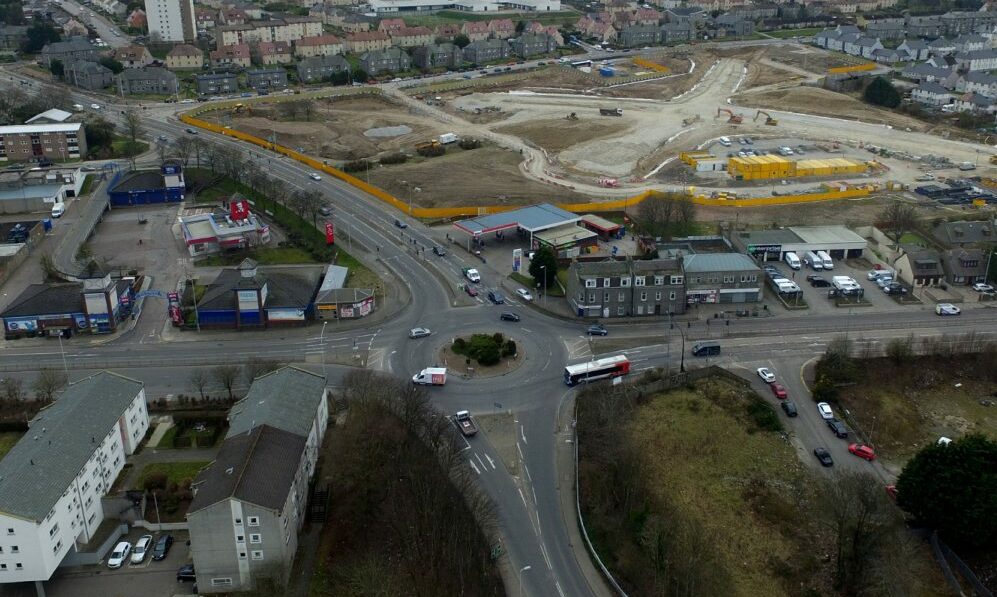Ask anyone in Aberdeen and they will tell you the Haudagain roundabout is one of the city’s worst bottlenecks.
That has been amplified this week with the closure of Auchmill Road due to a flooded gas main – causing queues of traffic to build up day after day as engineers work on a fix.
In the meantime, work on the multi-million-pound Haudagain bypass is ongoing – although it has been delayed until winter due to Covid.
Will we miss the Haudagain when the corridor finally opens? Probably not.
But here’s some facts for you to impress your passengers with next time you’re sat in the queue…
Where did ‘Haudagain’ come from?
The name is believed to originate from the 1800s when the location of the roundabout was used as a stopping point by travelling cattle farmers.
While travelling from Bucksburn to Aberdeen, the farmers would “haud again” – the Doric phrase for “hold back” – to check on their cattle.
However, others suggest that the name comes from the Scottish Gaelic “Achadh a’ Gabhainn” which can translate to “field” and “hill”.
Why is it always so busy?
Anderson Drive was originally built in the 1930s to help divert the traffic from the city centre but it soon became known as one of Aberdeen’s most dangerous roads.
In the 1950s, there were an average of two car accidents per week on the stretch of road and a campaign was launched to get a speed limit put in place, eventually being set at 40mph in 1961.
These days the Haudagain is even busier, with lorries, commuters and buses using the crossing, which bisects the A92 Aberdeen to Dundee and A96 Inverness to Aberdeen roads – resulting in “predictable mayhem”.
The winner of this year’s Roundabout Idol is…
The roundabout was once dubbed the worst of its kind in all of Europe.
Back in 2011, it was the only Scottish roundabout to be shortlisted in the Roundabout Idol competition, launched by an online car leasing company.
While in the running to win the title of the worst roundabout in the UK, the Haudagain was described by one national newspaper as the “deepest circle of hell”.
Thankfully it missed out, with Hemel Hempstead’s Magic Roundabout – which contains six mini islands – taking the crown.
However, figures obtained last year showed that the roundabout still causes challenges for motorists – with police called to it more than 400 times in the space of five years, mainly due to collisions.
Campaigning for improvements
Although there have been significant changes to the area over the years, the Haudagain roundabout has remained a traffic bottleneck. The people of Aberdeen have tried to advocate for improvements to be made several times in the past.
In 1898, locals campaigned for a suburban train station to be built in the area which many believed would be beneficial to business. A total of 178 residents signed the petition but no station ever came to fruition in this location.
The Haudagain has also caused major issues for pedestrians with it often being completely impossible to cross the roads surrounding the roundabout. Pedestrian crossing were finally installed in 1986.
In 2006, the Institute of Directors revealed that the Haudagain cost the local economy between £15-£30million annually.
The council considered an urgent report in 2008 and decided work on the roundabout needed to “commence immediately”.
However, more than a decade later, that work is still ongoing.
Haudagain no more?
As part of the A92/A96 improvement project, a new 1,600ft dual carriageway is being built to link North Anderson Drive and Auchmill road.
It is hoped that this will help to reduce traffic build-up, but the project has been hit with delays.
During the works – which have required more than 130 properties to be demolished – motorists are contending with contraflow systems, speed restrictions and lane closures.
The project was originally planned to be completed in spring this year, but delays due to Covid have pushed it back to the winter – subject to any unforeseen circumstances.
This has prompted fears that the final cost of the project may be much higher than the projected £50million.



